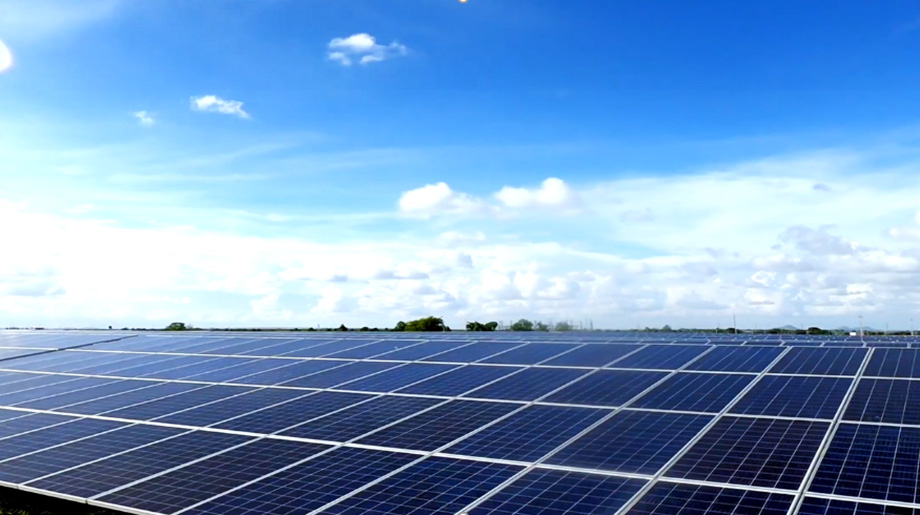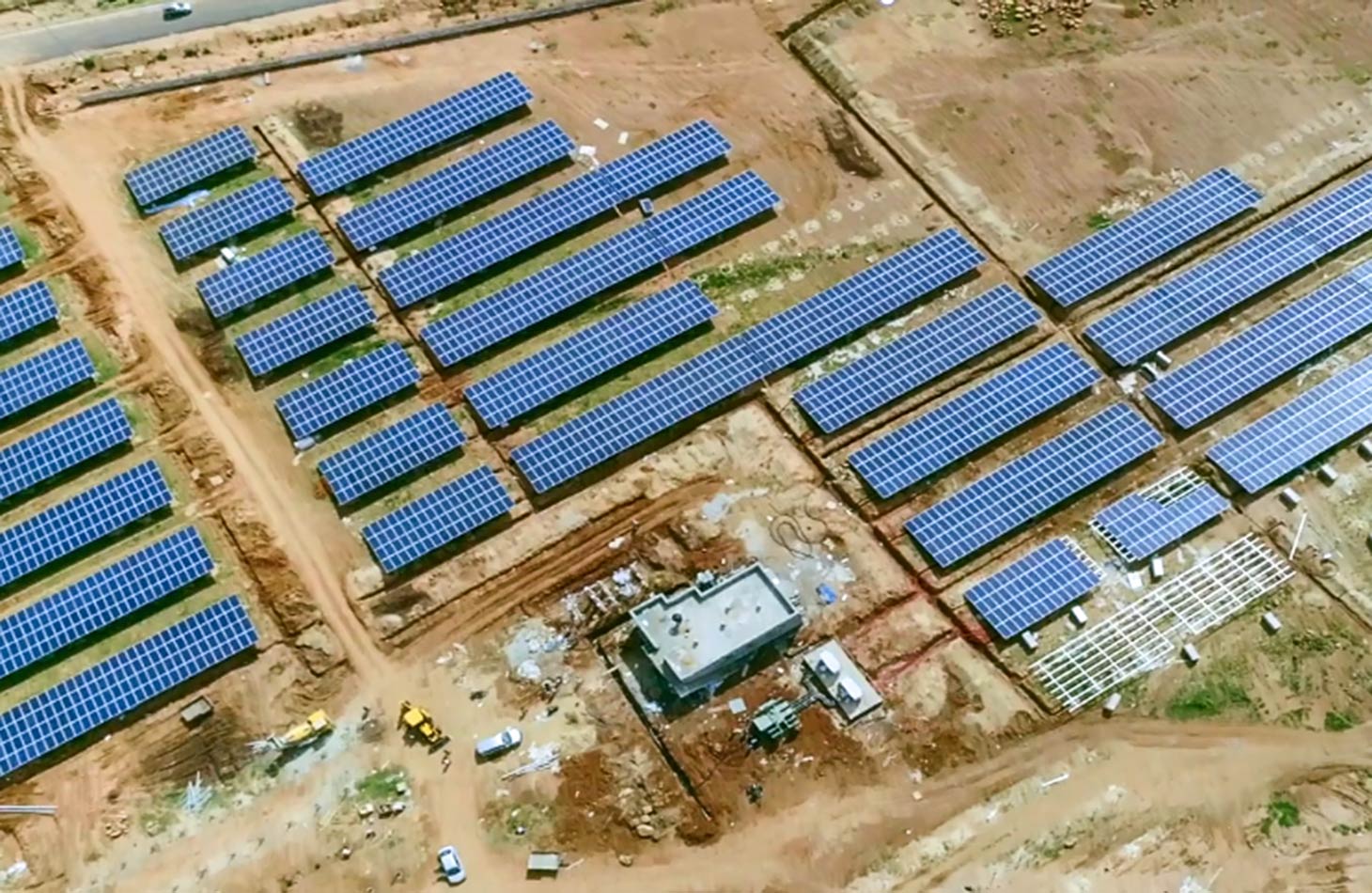Electricity from solar energy in Karnataka, India

Project type: Solar
Project location: Karnataka, India
Project status: In operation, credits available
Annual emission reduction of the whole project: 200,000 t
The installation of the solar park in Thirumani in the Indian state of Karnataka means that electricity generated mainly by coal is being replaced by that of solar energy and that local jobs are being created.
With around 300 clear and sunny days a year, India is an ideal location for sustainable power generation using solar energy. Despite this fact, coal still plays a dominant role in India’s energy mix. In 2020 around 70 per cent of electricity was still provided by coal-fired power plants. In contrast, renewable energies only account for around a 17 per cent share.
The region is badly affected time and again by drought, which makes it difficult for farmers to practise high-yield farming methods. The Karnataka government has officially declared an emergency drought situation in Tumkur a total of 54 times in the last 60 years. Many people have already abandoned their farms due to the drought and migrated to the surrounding towns to try to earn a living. This has led to the region becoming sparsely populated.
Solar power plant generates clean electricity and creates local jobs
The project involved installing a 100-megawatt solar power plant in the Tumkur district of the southern Indian state of Karnataka. The village of Thirumani has around 2,200 inhabitants, most of whom are self-sufficient peasant farmers. One of the reasons for choosing a site in the Tumkur district was the high and constant level of solar radiation. The project site is located on an elevated plateau, surrounded by granite hills.
The plant has been providing renewable, locally produced electricity and reducing CO₂ emissions by 200,000 tonnes a year since 2017. In doing so, it is helping to reduce the supply deficit in times of power shortage, and increasing the share of renewable energies in India’s power mix. Over one million photovoltaic modules have been installed.
The operation of the solar park is also creating permanent local jobs for local people. In addition, training courses are held regularly for the workers, particularly on topics such as safety measures, maintenance of the photovoltaic modules, first-aid measures etc. Regular visits to the plant by specialists, technicians and visitors and the infrastructure created are having an additional positive impact on the economy of the villages and the surrounding area.
Construction phase created thousands of temporary jobs
Thousands of migrant workers from all over the country were employed during the plant’s construction phase. People from all over the country, with different religions, cultures, languages and eating habits, as well as social rituals, were housed together in worker housing. Fortum, the project’s leading energy company, brought in the NGO Parivartan at this stage to help with integration and communication. Parivartan ran information sessions on hygiene practices, worker’s rights, safety measures, and the respectful treatment of female workers. Recreational events, such as movie nights and plays, were also organised.
This project contributes to 3 SDGs (as of end 2021):
Find out how myclimate reports these SDGs in our FAQ.
The following SDGs are verified by the Gold Standard:
214 gigawatt-hours of electricity are generated annually. This equates to the average electricity consumption of around 50,000 four-person households in Germany per year.
67 permanent full-time positions were created by the project.
This project reduces carbon emissions.
Situation without project
Power generation from coal-fired power plantsDocumentations
Project standard

Project number
7236







